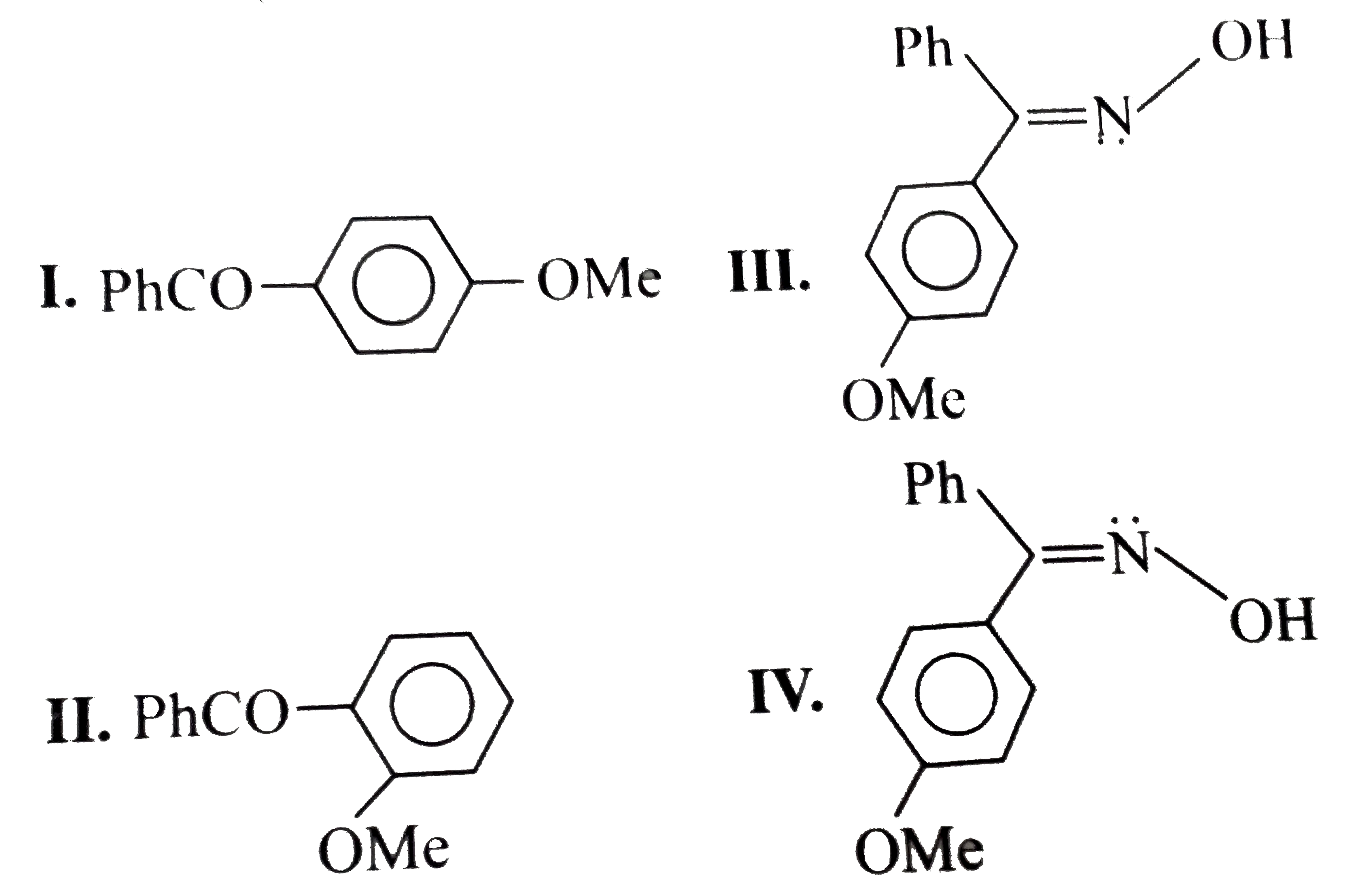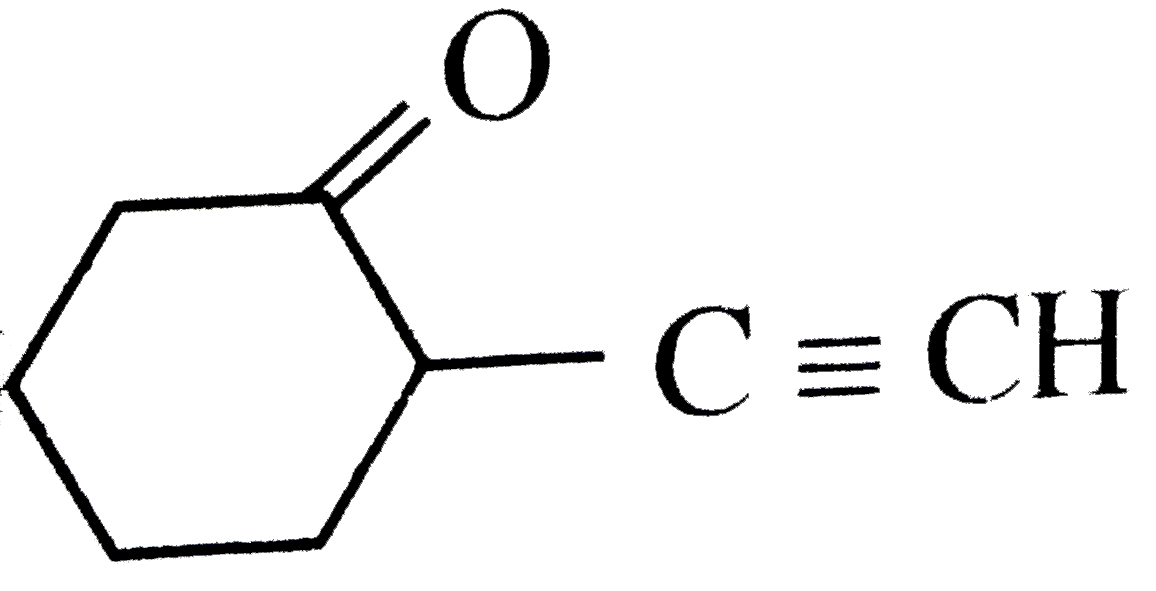CH3−C≡NH2O/Δ−−−−→(A)H2O/H+−−−−−→(B)(A)and(B) respectively are
CH3−O∣∣C−NH2andCH3COOH
CH3COONH4andCH3COOH
CH3CONH2andCH3COONH4
CH3−CH=NHandCH3COOH
The correct Answer is:A
To solve the given question, we will analyze the reaction sequence step by step.
Step 1: Identify the starting compound
The starting compound is given as CH₃C≡N (methyl cyanide or acetonitrile).
Step 2: Understand the first reaction
The first reaction involves the partial hydrolysis of CH₃C≡N. Hydrolysis typically involves the addition of water (H₂O) to break chemical bonds. In this case, the triple bond between carbon and nitrogen is being hydrolyzed.
Step 3: Determine the product A
Upon partial hydrolysis of CH₃C≡N, the product formed is an amide. The reaction can be represented as:
CH3C≡N+H2OΔ−→CH3C(=O)NH2
Thus, product A is:
A=CH3C(=O)NH2
This compound is known as acetamide.
Step 4: Understand the second reaction
The second step involves the further hydrolysis of product A (acetamide) in the presence of an acid (H⁺). This reaction converts the amide into a carboxylic acid.
Step 5: Determine the product B
The hydrolysis of acetamide (CH₃C(=O)NH₂) leads to the formation of acetic acid (ethanoic acid) and ammonia (NH₃). The reaction can be represented as:
CH3C(=O)NH2+H2OH+−−→CH3COOH+NH3
Thus, product B is:
B=CH3COOH
This compound is known as acetic acid.
Final Answer
- Product A: CH₃C(=O)NH₂ (Acetamide)
- Product B: CH₃COOH (Acetic Acid)
---
The starting compound is given as CH₃C≡N (methyl cyanide or acetonitrile).
The first reaction involves the partial hydrolysis of CH₃C≡N. Hydrolysis typically involves the addition of water (H₂O) to break chemical bonds. In this case, the triple bond between carbon and nitrogen is being hydrolyzed.
Upon partial hydrolysis of CH₃C≡N, the product formed is an amide. The reaction can be represented as:
CH3C≡N+H2OΔ−→CH3C(=O)NH2
Thus, product A is:
A=CH3C(=O)NH2
This compound is known as acetamide.
The second step involves the further hydrolysis of product A (acetamide) in the presence of an acid (H⁺). This reaction converts the amide into a carboxylic acid.
The hydrolysis of acetamide (CH₃C(=O)NH₂) leads to the formation of acetic acid (ethanoic acid) and ammonia (NH₃). The reaction can be represented as:
CH3C(=O)NH2+H2OH+−−→CH3COOH+NH3
Thus, product B is:
B=CH3COOH
This compound is known as acetic acid.
- Product A: CH₃C(=O)NH₂ (Acetamide)
- Product B: CH₃COOH (Acetic Acid)
Similar Questions
In the reaction sequence
C6H5CHONH2OH/H⊕−−−−−−−−→Δ(X)P2O5/Δ−−−−−→(Y)H2O,H+−−−−−→(Z)
(X), (Y) and (Z) respectively be
View SolutionC4H6H2+Pt−−−−→1molC4H8O3/H2O−−−−→ Acedic acid
(A) and (B), respectively, are:
View SolutionIn the reaction sequence CH3CHONH2OH/⊕H−−−−−−−→(A)P2O5/Δ−−−−−→(B), B will be
View SolutionConsider the following reaction ,
C6H5NH2+CHCl3+KOHΔ−−→(A)H+/H2O−−−−−→(B)+(C)
The compounds (B) and (C) are :-
View SolutionKetone (A) NH2OH.HCl−−−−−−−−→ (B) H⊕−−→

The ketone (A) and compound (B), respectively, are:
Ketone (A)
I.
Compound (B)
View SolutionIn the reaction sequence CH3−CH2−CH2−BrAgCN−−−→(X)H2∅H+−−−−→(Y) (Y) will be
View SolutionLi+N2Δ−−→AH2O−−→B+(C) gas
Then the correctly matched pair for A,B,C are :
View SolutionH−≡−H(i)O3−−−−−−−−−−−→(ii)(H2O)/(Zn)(A)Zn/CH3COOH−−−−−−−−−→(B)
Compound (B):
View Solution
Conc. H2SO4−−−−−−−−→BO3/H2O/Zn−−−−−−−→C. A, B and C are -
View Solution
∣HgSO4/H2SO4−−−−−−−−−−→(A)2molofMeMgBr/H3O⊕−−−−−−−−−−−−−−→(B). (B) is :
View Solution
